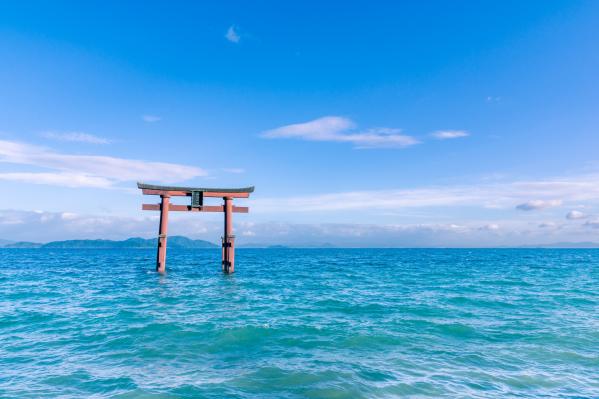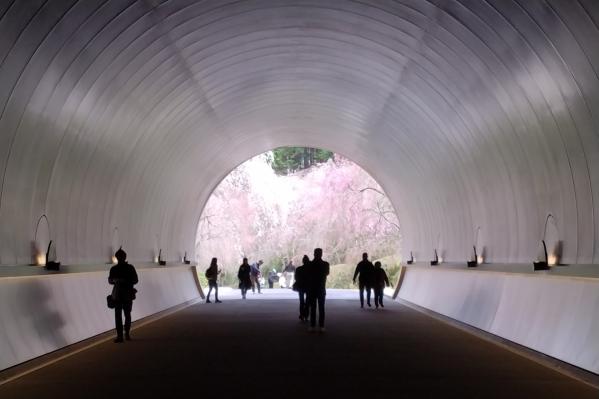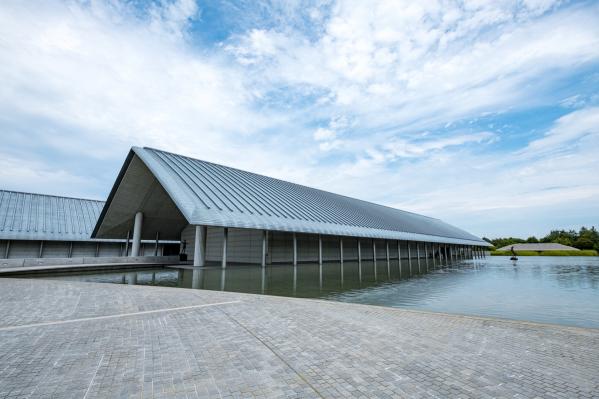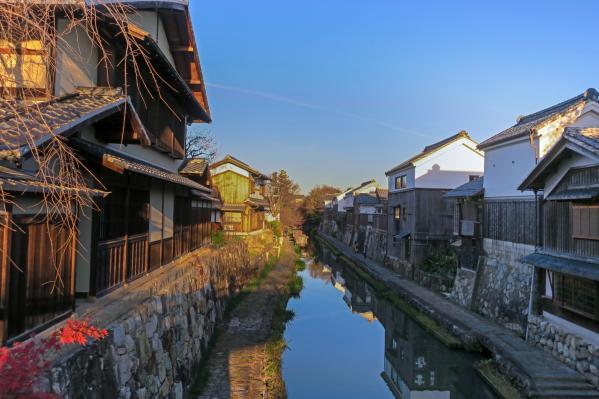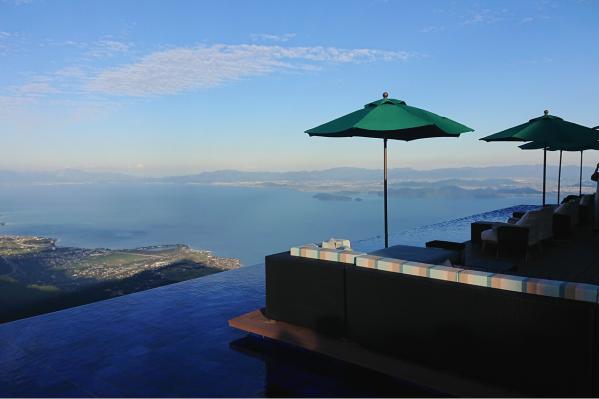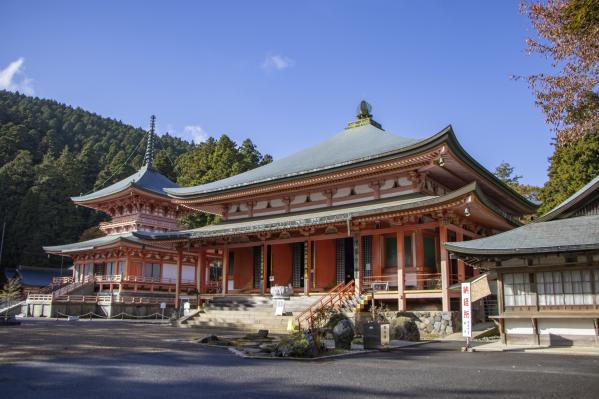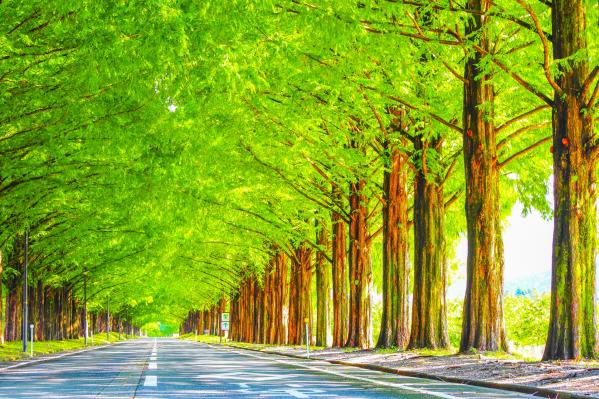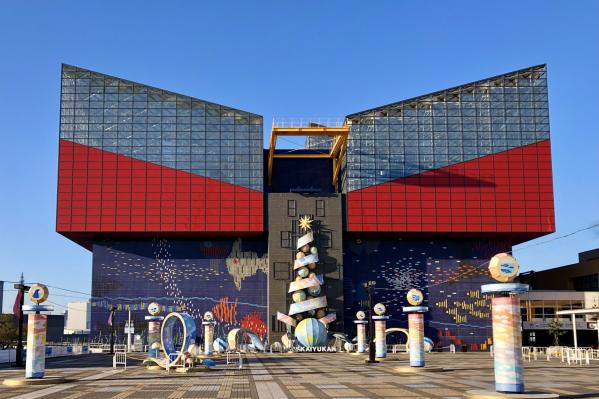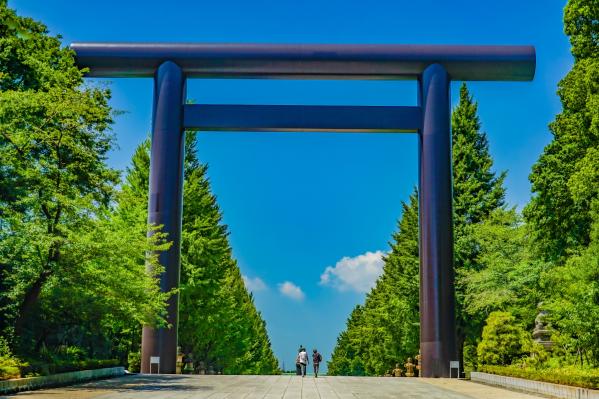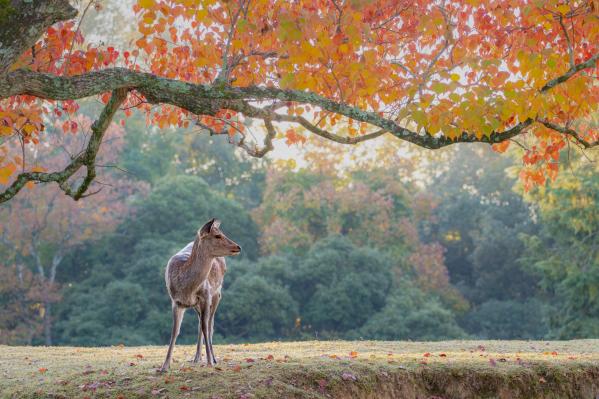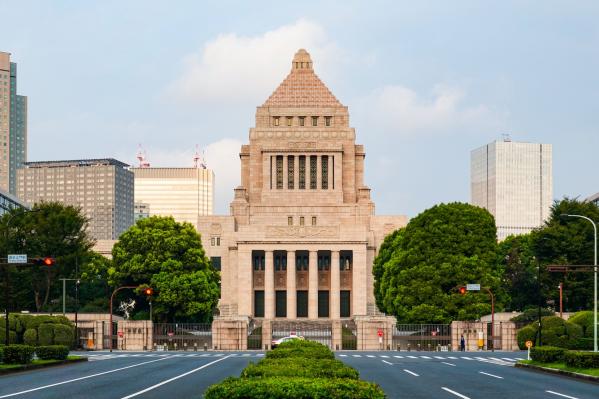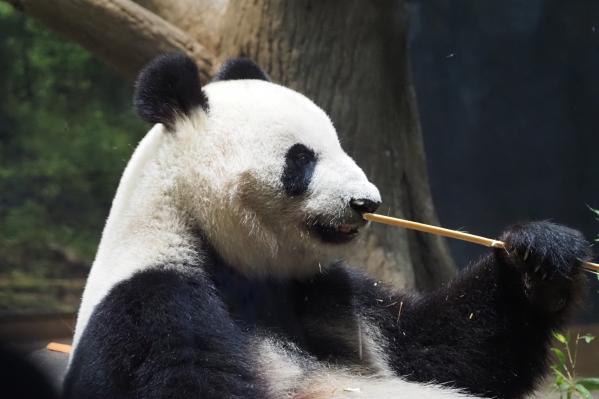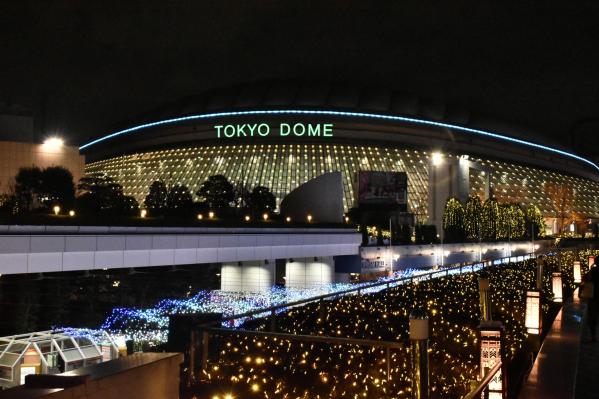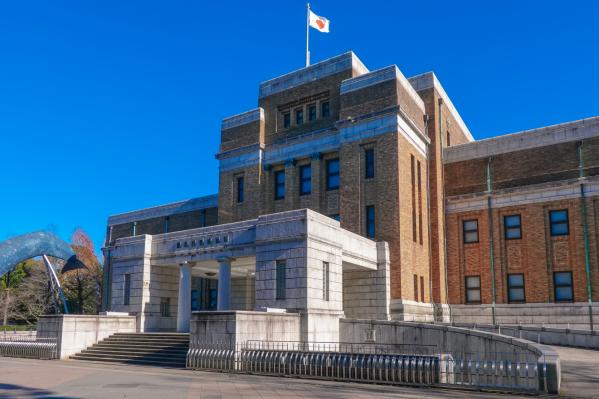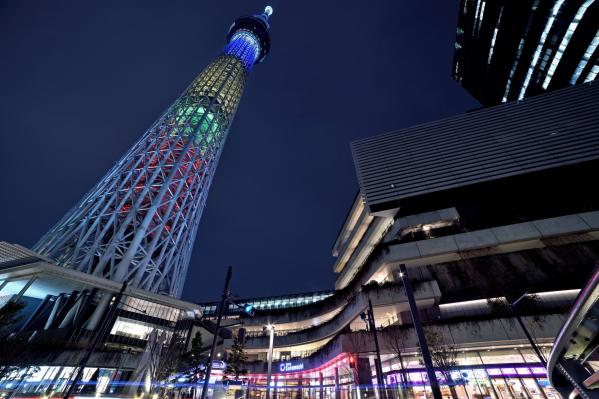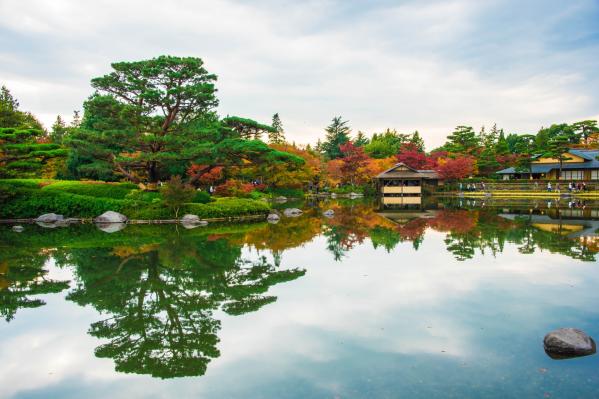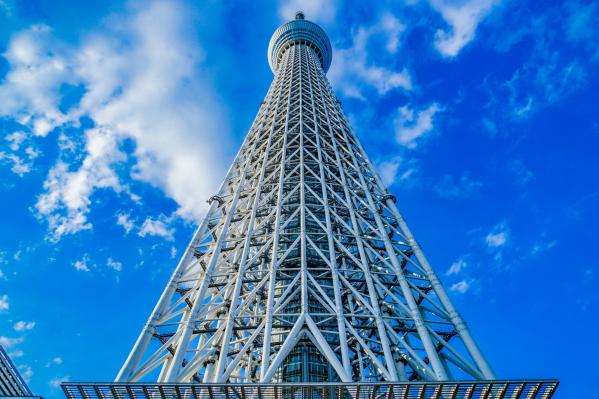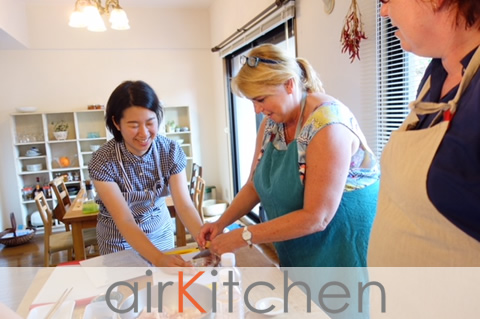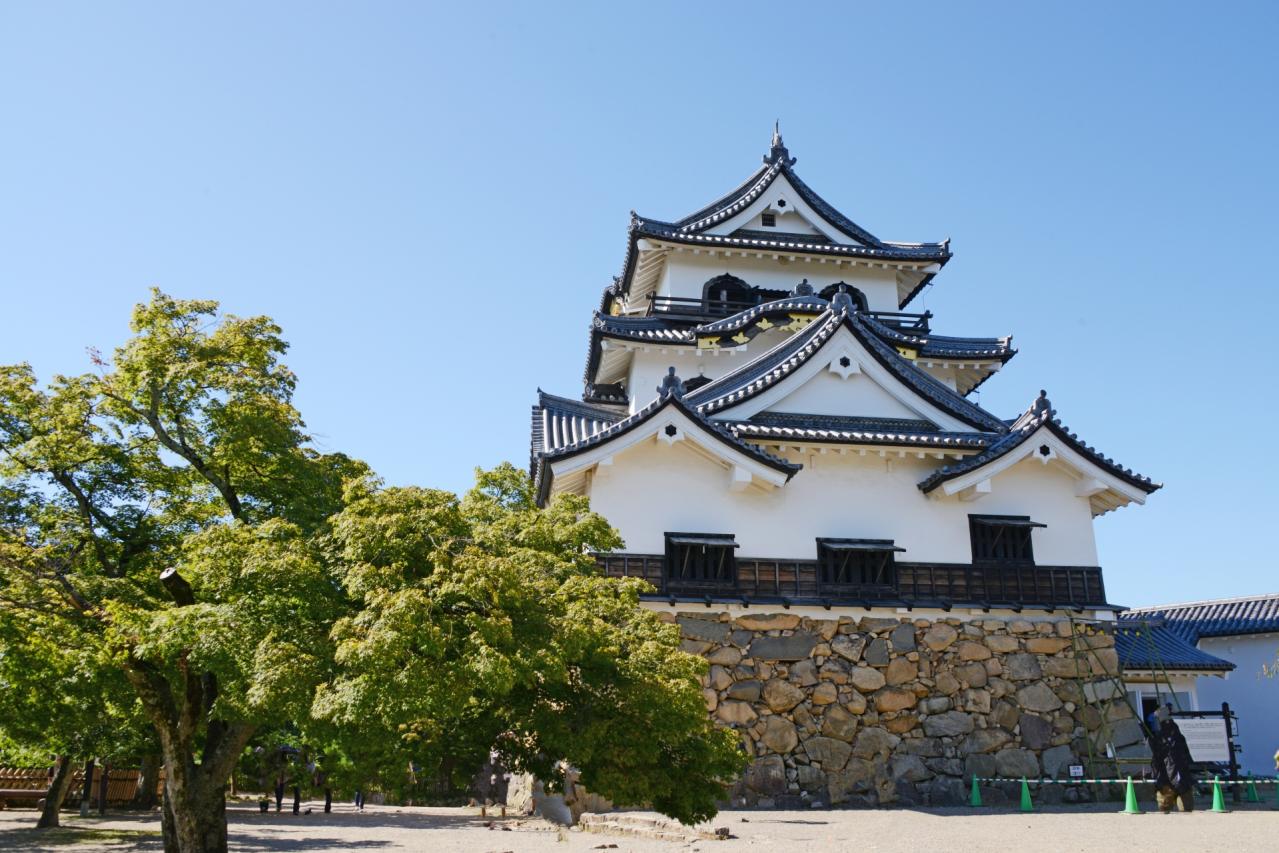
Hikone Castle
A distinctive feature of Hikone Castle is its robust stone walls known as gobōzumi, upon which the three-story main keep stands. This keep is recognized as a national treasure, characterized by the beauty of its curves and the arrangement of its flower-shaped windows. Furthermore, Hikone Castle houses many other national treasures and important cultural properties in very good condition.
Hikone Castle is also famous for its beautiful night illuminations and as a cherry blossom viewing spot, cherished as a landmark of Hikone City. It is enjoyed by visitors for its history and beauty, being recognized as one of Japan's famous castles.
Basic Information
- Spot Name
- Hikone Castle
- Location
- 〒522-0061 1-1 Kankimachi, Hikone City, Shiga Prefecture, Japan
- Access
- Get off at "Hikone" on the JR Biwako Line, and it's a 15-minute walk.
- Parking
- Regular cars: 280 spaces
Large vehicles: 25 spaces
Handicapped: 10 spaces - Business Hours
- 8:30 AM to 5:00 PM
- Regular Holiday
- Open year-round (The International Exhibition Memorial Hall will be closed from December 25 to December 31.)
- Fees
- Adults: 800 yen, Children: 200 yen
- Contact Information
- Phone Number:0749-22-2742
- Official Website
Map
Detailed Information
1. National Treasure: Hikone Castle Main Keep, Attached Turrets, and Tamon Turret
The main keep features three floors and a three-tiered roof. The roof is adorned with various styles including "kirizuma-hafu," "iriomoya-hafu," and "karahafu." The second and third floors are decorated with "katō-mado," and the third floor is surrounded by a "mawari-en" with balusters, emphasizing the castle's external appearance and showcasing its beautifully varied form. It is said to have been relocated from Otsu Castle, excelling not only in its visual appeal as a political symbol but also in its military functionality. It was designated as a national treasure in 1952. Besides Hikone Castle, only Himeji Castle, Matsumoto Castle, Inuyama Castle, and Matsue Castle have national treasure main keeps. At night, it is illuminated, cherished by the citizens of Hikone as a landmark.
2. Important Cultural Property: Hikone Castle Nishinomaru Three-story Turret and Continuous Turrets
This turret is built to the west of Nishinomaru, with a deep moat separating it from the protruding outworks further west. It served as a defensive stronghold against enemies approaching from the western rear. The three-story turret is positioned to overlook this rear approach and also served to monitor Lake Biwa during peacetime.
3. Important Cultural Property: Hikone Castle Taiko Gate and Continuous Turrets
This turret gate guards the main entrance of the honmaru where the main keep is located, named for housing a drum used to signal within the castle. The rear of the building is open, featuring a corridor with balusters, making it a very rare structure for a turret. Additionally, investigations during dismantling repairs revealed it had been relocated from another castle gate.
4. Important Cultural Property: Hikone Castle Tenbin Turret
Located at the top of the paths leading from the Otemon and Omotemon gates, the corridor bridge in front can be dropped in wartime. Enemies must climb the high stone walls of the Tenbin turret to invade the honmaru coming up either the Omotemon or Otemon paths, making it a vital point. The turret gate connects symmetrically to the left and right paths, creating a double turret at the corner of the tamon turret, which is the origin of the name "Tenbin." It is believed to have been relocated from another castle. The stone walls' foundation features dry-stacked stones from the castle's construction on the right and later renovations from the late Edo period on the left.
5. Hour Bell
Moved from "Bell Hill" to resonate throughout the castle, this bell is still rung at set times and has been selected as one of "Japan's 100 Soundscapes." During the late Edo period, the 12th lord of the domain, Naoyasu, had a large amount of gold coins melted down to improve its sound quality. The adjacent Chōjōan offers visitors a chance to enjoy thin tea (with snacks for ¥500) from 9:00 to 16:00.
6. Kannon-dai
In the 4th year of Yōrō (710), Hikone-dera was established by the provincial governor of Ōmi, Fujiwara no Fusahira, with an 18-inch Kannon statue as its main object of worship. It is said to have housed a hall containing a Kannon riding a golden turtle. Kannon is believed to be beneficial to the eyes, and the rumor spread even to Kyoto, attracting numerous visitors, including Emperor Shirakawa and various ministers.
7. Yamazaki-kuruwa (Yamazaki Earthen Fortification Ruins)
This site is believed to be where the Kimmat residence once stood, welcoming the victorious Ii Naotaka. There used to be a Yamazaki Gate here. While not frequently visited, the area is a serene space surrounded by trees, offering a restful experience throughout the seasons.
8. Plum Grove
This was once the location of the Hikone Castle's official rice granaries. Each year, around mid to late March, approximately 450 plum trees, including red and white varieties, signal the arrival of spring. These plums were planted to commemorate Hikone Castle being selected as one of Japan’s New Tourist Sites.
9. Important Cultural Property: Horse Stable
It is said that 21 horses belonging to lords and others were once tied here, making this stable a unique building found only at Hikone Castle. After receiving its second full-scale cultural asset preservation repair in 2015, the stable with its beautiful thatched roof has returned to its former appearance.
10. Scenic Spot: Genkyū-en Garden
Genkyū-en is a large pond-style strolling garden created in the early Edo period as a back garden to the Tsuki Mansion (currently Rakurakuen). The pond, carved at the center, features four islets and various bridges, ensuring free circulation and enhancing the garden's vistas. The scenery enjoyed from Musashino includes the pond in the foreground, Hōshō-dai (tea house) in the middle, and the main keep of the castle above, all creating a balanced postcard-like landscape that captivates visitors. Additionally, the trees and flowers within Genkyū-en showcase their seasonal charm, particularly during autumn.
11. Hōshō-dai
This prominent high point is said to be named for the place where the phoenix soars into the sky. The name "Hōshō-dai" is depicted in the "Genkyū-en Picture," illustrating it as one of the ten scenic spots in Genkyū-en during the Edo period. Illustrations show elegantly decorated boats below the high point, and at times, the site was used for boating activities.
12. Scenic Spot: Rakurakuen
The area we now call Rakurakuen is believed to have been constructed by the 4th lord, Naonaka, in 1677 as a lower residence. During the Edo period, it was referred to as the Tsuki Mansion. This mansion served both as a lower residence and a retreat, and the 13th lord, Naosuke, was born here as the child of the 11th lord, Naotaka, during his retirement. Restoration projects for this historic building have been underway since 2005.
13. Important Cultural Property: Hikone Castle Ni-no-maru Sawaguchi Tamon Turret
This tamon turret extends to the left towards the Sawaguchi gate. It was damaged by fire in 1767, and the current structure was rebuilt between 1768 and 1770. In the Meiji period, the turret gate was lost, but originally it was part of a unified structure with the tamon turret extending to its right (now the Kaikoku Memorial Museum).
*Currently not open to the public.
14. Iroha Pine
This row of pines along the central moat towards the Omotemon bridge originally had 47 trees, leading to the name. Currently, 34 remain (with 12 replanted), preserving the scene of the past. The third lord, Ii Naotaka, had Tosa pine planted to avoid interference with foot traffic when transplanting the collected trees from various locations.
15. Uma Boku-sha
This is the place where Ii Naosuke spent his youth. He composed a poem reflecting on his aloof feelings with "Though I watch the world, my heart is like the buried wood." He named it "Uma Boku-sha," and diligently practiced both literary and martial arts here. It is said that the talents he developed, leading to his role as a father of Japan's opening during the Tokugawa shogunate, were cultivated here.
City-designated Cultural Property: The Old Ikeda Residence Nagaya Gate
Designated as a cultural asset by Hikone City in 1973, this nagaya gate exemplifies the typical mid-level samurai residence of the former Hikone domain. Complete dismantling and repairs took approximately three years starting in 2009, and visitors can see the section that was once used to tie up horses.
Hikone Castle Movies
Shiga Tourist Attractions
View ListOumi Shrine
Omi Shrine is a shrine dedicated to Emperor Tenchi, located at the site of the ancient capital of Omi Otsu Palace, where Emperor Tenchi established his court. He is ...
Miho Museum
MIHO MUSEUM, opened in 1997, is an art museum designed by the world-renowned architect I.M. Pei. The design theme is "paradise," providing a mystical space where nat...
Sagawa Art Museum
The Sagawa Art Museum is located on the shores of Lake Biwa and is known as the "museum that floats on water." The design of the museum harmonizes with the vast wate...
Hachimanbori
Yahata-bori is a waterway built during the Azuchi-Momoyama period by Toyotomi Hidetsugu to support the castle town of Yahata-yama. It played a significant role in th...
Lake Biwa Terrace
Biwa Lake Valley is located at an elevation of 1,100 meters on the summit of Mt. Uchimi, offering a spectacular view of Lake Biwa. Visitors can reach the summit in a...
Mount Hiei Enryakuji
Hieizan Enryaku-ji is the head temple of the Tendai sect, located at the border of Kyoto and Shiga, with a history spanning over 1,200 years. It began when Saicho es...
Metasequoia Namiki
The Metasequoia Avenue in Makino Town, Takashima City, Shiga Prefecture, features approximately 500 metasequoias planted along a 2.4 km stretch, creating a beautiful...









